By Paul Rozycki
Are you ready to “fix the damn roads?” It was Gov. Whitmer’s campaign promise, and just about everyone agrees that it’s job one for Michigan this year.
But, how do we pay for it? By most estimates, the state needs to raise about $2.5 billion to get the job done. And even then, it will take years to undo the harm from the underinvestment over the past decades.
In 2018, only 77 percent of the state’s roads were in “good or fair” condition. By 2025, less than 50 percent will be “good or fair,” and the numbers grow worse after that. More than 40 percent of Detroit’s and Flint’s roads are rated in “poor” condition. Many sources list Michigan’s roads as the worst or nearly the worst in the nation.
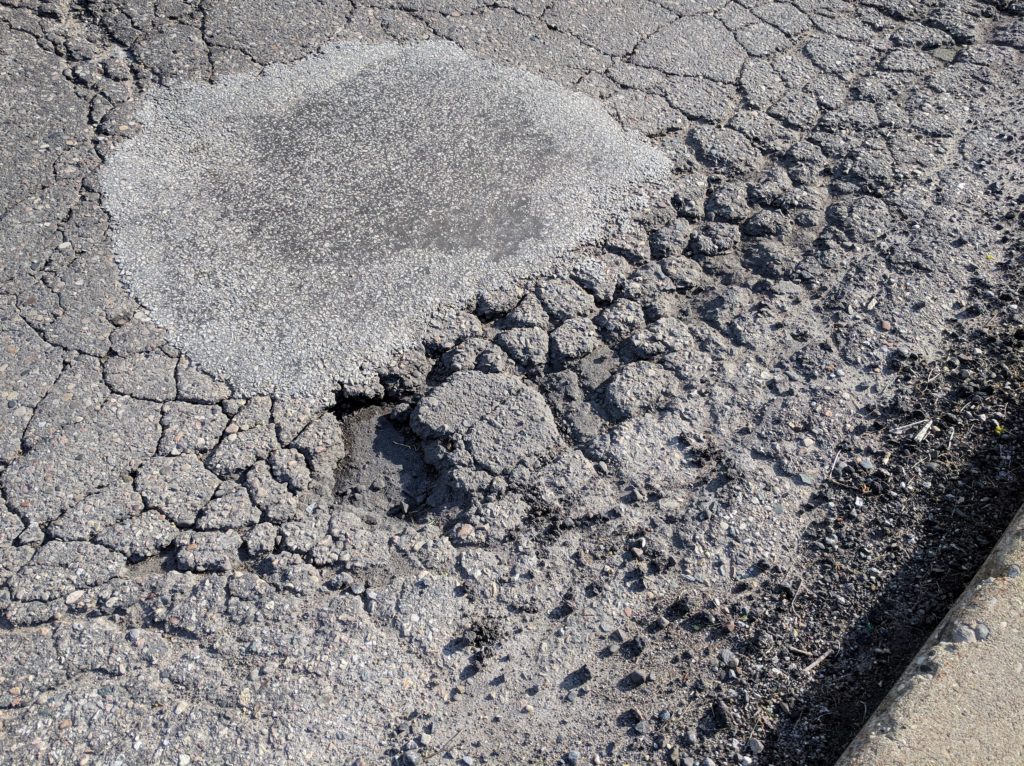
Flint pothole (Photo by Paul Rozycki)
There are a number of choices to fix the roads, but none of them are cheap, none of them will be quick, and none of them will be easy to sell politically. Here’re a few options with some pros and cons of each.
The gas tax?
Currently, about half of Michigan’s Transportation Fund comes from fuel taxes, and about half from vehicle registration fees. Gov. Whitmer has proposed a 45-cent increase in the gas tax as part of her budget this year. It would raise the required amount of money, but it would give Michigan the highest gas tax in the nation, at a time when fuel prices are rising. It would raise Michigan’s gas tax to 71.3 cents per gallon, well ahead of Pennsylvania, currently the highest, at 57.6 cents per gallon. We are currently the sixth highest in the nation.
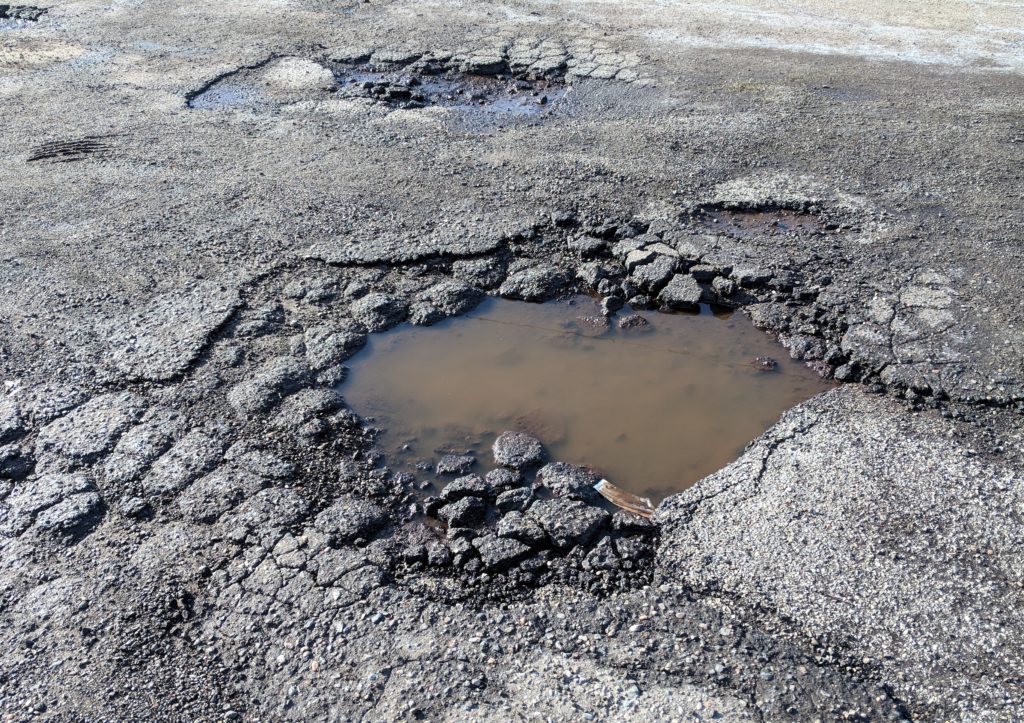
Who knows how deep that puddle is? (Photo by Paul Rozycki)
The governor’s plan would phase in over the next year and a half, reaching the full 45-cent increase in October of 2020. There has been a strong reaction to the proposal from many quarters. Republicans in the state legislature consider it a non-starter. Some businesses are afraid of the impact, and more than a few of Whitmer’s supporters have doubts about the political wisdom of such a large increase.
In support of her plan, Gov. Whitmer said that the poor roads cost the average driver $562 per year in repairs, (one estimate placed Flint’s costs at $797), while the gas tax increase would cost the average person — who drives 15,000 miles a year, in a car that gets 30 miles per gallon — about $225 per year. While the tax might hit the poor harder, other changes would reduce taxes for low-income families.
The fuel tax increase would raise the needed money, but taxing fuel has one major problem. Autos are becoming more fuel-efficient. In 1975, cars averaged just a little over 13 miles per gallon. In 2017, they got over 25 miles per gallon. And that number is likely to increase in the future with better engines and electric vehicles. That’s all great news for drivers, but it means less fuel sales, and a smaller amount of tax revenue for the roads. To keep up with better fuel efficiency, fuel taxes might need to rise even more in the future.
Having said all that, Gov. Whitmer knows the legislative process, and the 45-cent increase may turn out to be an opening bid in negotiations with the lawmakers, subject to change in several directions. Working with the Republican legislature, the amount of the increase could change, so could the time frame, or there could be other changes in revenue sources. But at least both parties seem committed to finding a solution.
Other new revenue?
Are there other sources of new money for the roads?
How about toll roads in Michigan? As an “auto state,” Michigan has long opposed toll roads, though many other Midwestern states have them. But even if we did have toll roads, it probably wouldn’t raise enough money. The Ohio Turnpike, which is heavily traveled, raised about $329 million in 2017 — not even close to the $2.5 billion that we need.
And on top of that, since we are a peninsula surrounded by lakes, Michigan doesn’t have as many vehicles “passing through” as Ohio, Indiana or Illinois do. Typically, only freeways can be turned into toll roads. Only about one percent of Michigan roads are freeways, and the tolls are normally used only to maintain the tollways.
What about the lottery? The state lottery raises a little less than $1 billion each year, which is dedicated to fund education, and many argue that education is underfunded already.
The marijuana tax? Not even close. It would raise about $150 million at best.
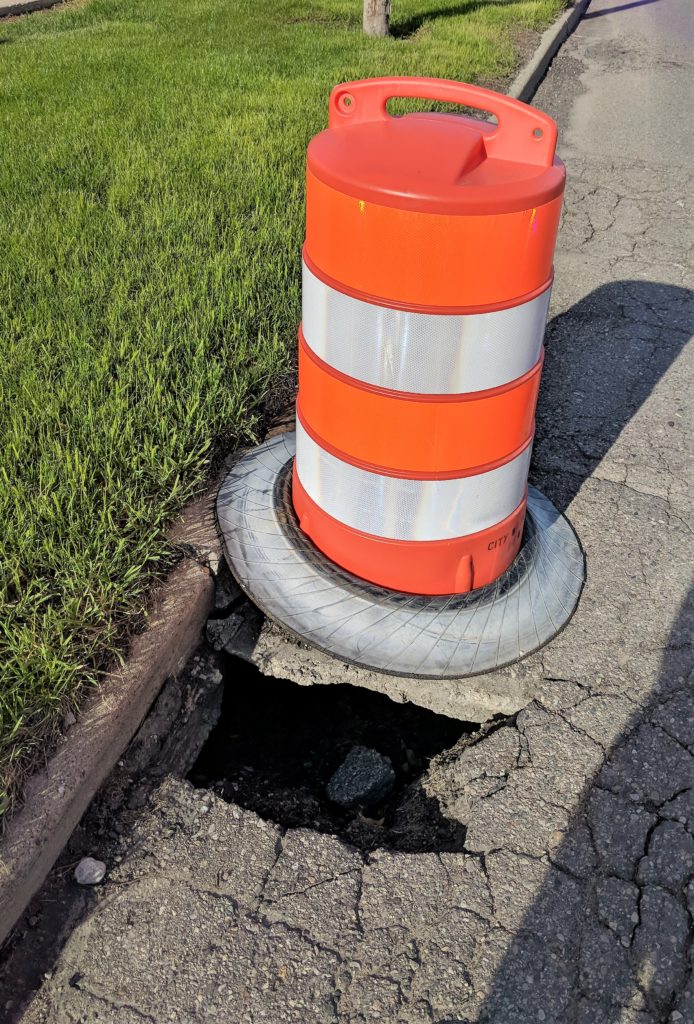
Halfway to China down there (Photo by Paul Rozycki)
Could we use the “Rainy Day Fund?” Currently, it’s a little over $1 billion and has been built up over the last decade, but it would only cover a part of the needed road funds, and using it would leave the state with no emergency reserve in times of recession.
Similarly, others have suggested an increase in the sales tax, property tax, income tax, beer and wine tax, and others, but politically, those ideas have little chance in the legislature. Michigan State University economist Charles Ballard said, “The economics is pretty easy. The politics is really hard.”
More money from the General Fund?
While the overall state budget is about $60 billion, much of that is federal money and is already allocated for specific purposes. The state’s General Fund, where the governor and lawmakers have some choice of how they spend the money, is about $10 billion. Could the state find an extra $2.5 billion in the General Fund?
Not likely. That would require large cuts in funding for K-12 education, colleges and universities, corrections, health and human services, and other key interests. Perhaps a few dollars could be found by reallocating some of the General Fund, but politically, it would be nearly impossible — and perhaps unwise — to try and find anywhere near the full amount in the current General Fund.
Borrow the money?
Like most governments, the state has the option of borrowing money for long-term projects. Yet, unlike the national government, states must have balanced budgets. There are two major sources for borrowed money for Michigan.
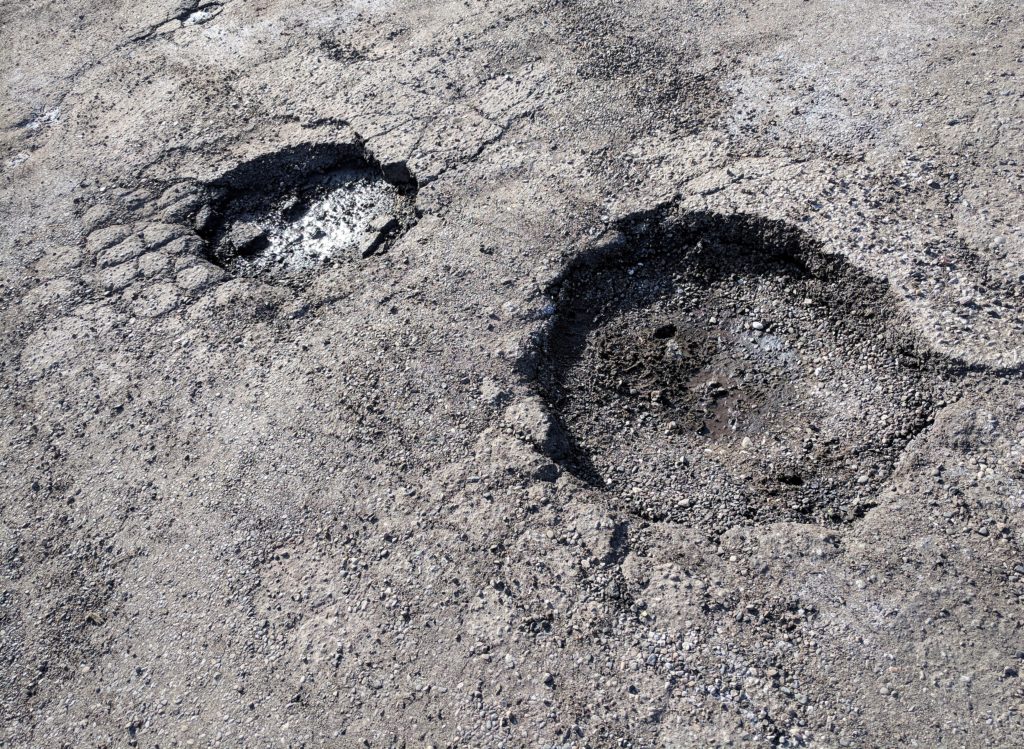
It’s not the moon: it’s a road in Flint (Photo by Paul Rozycki)
The state can borrow through the State Trunkline Fund, which is backed by transportation taxes and revenues. But there are specific limits to the amount the state can currently borrow in this manner. Based on current conditions, it couldn’t raise more than $1 billion in this manner, and it could only be used for state roads, not local, county, city or village roads.
The state could also issue general obligation bonds, backed by the full faith and credit of the state. There is no limit to the amount, but these bonds would require the approval of the voters. Like any bonds, the interest payments would be an added expense for the state well into the future. While this could raise a lot of money quickly, it might hamper the state’s chances to raise new money for road maintenance or other projects in the future.
Who gets the money?

Paul Rozycki
Finally, if and when the money is raised to “fix the damn roads,” the next question is how to spend it. The state has a complex formula for how road funds are distributed to the state, county, city, township, and village levels. Act 51, passed in 1951, sets up the basic principles of how road funds are given to local governments. Many of those who have sought new sources of funding also have maintained that the formula for giving out those funds is dated and unfair, and needs to be changed. That may be a topic for a future column.
EVM staff writer and political columnist Paul Rozycki can be reached at paul.rozycki@mcc.edu.

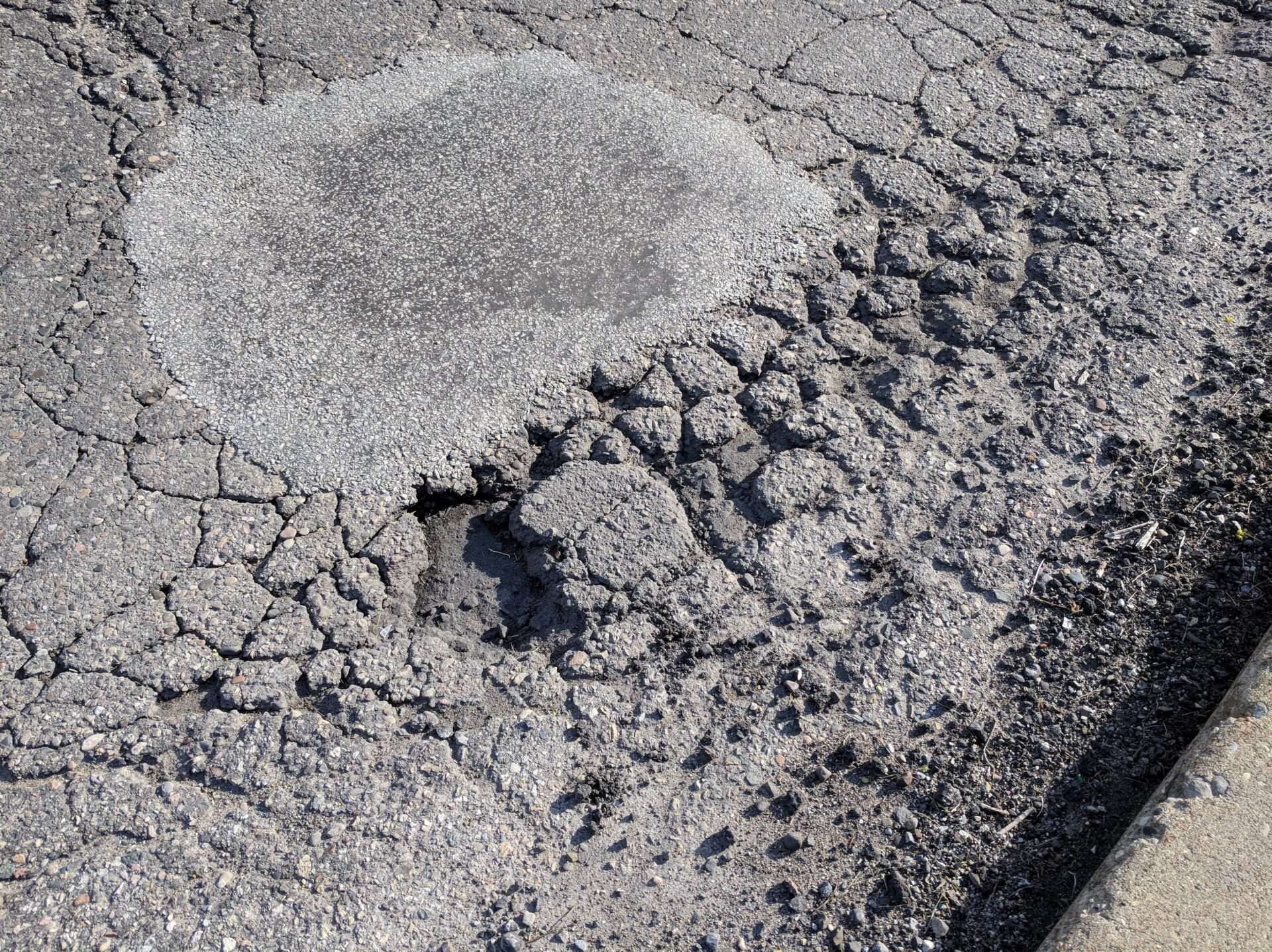




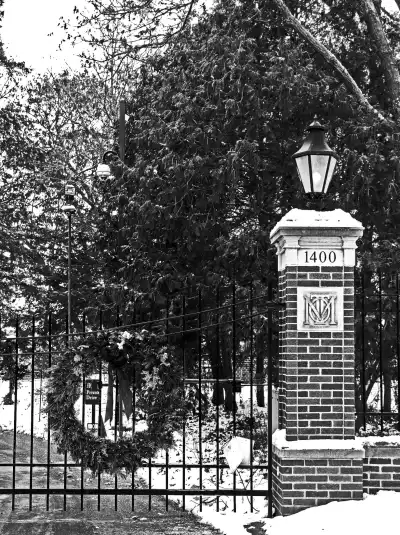

You must be logged in to post a comment.